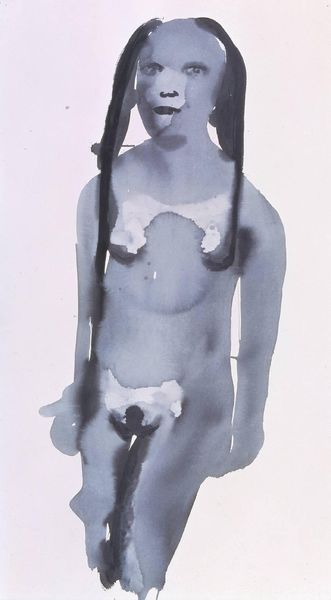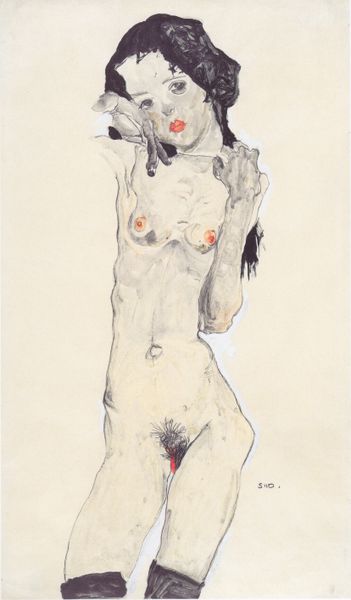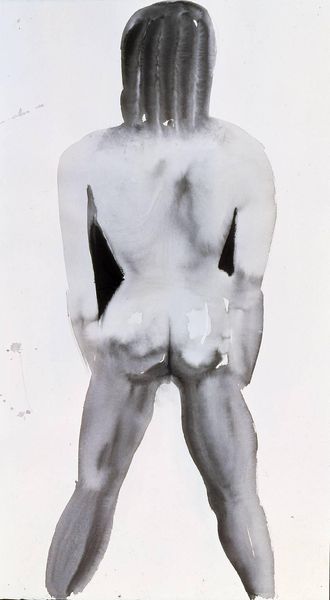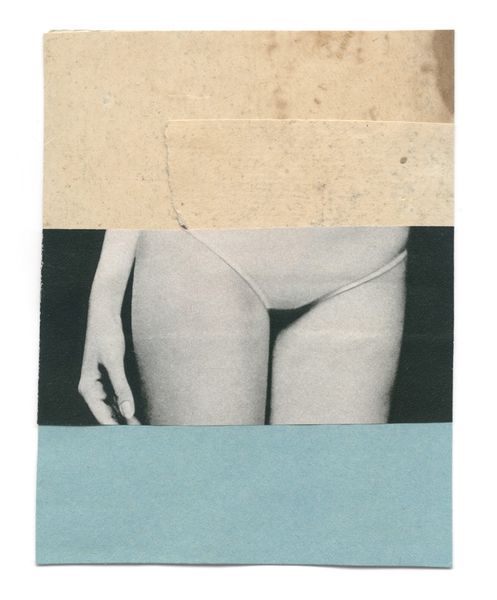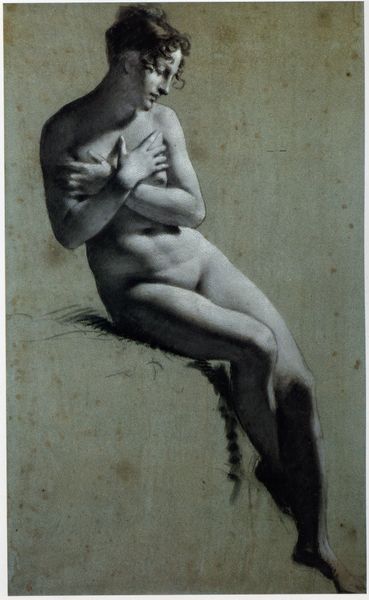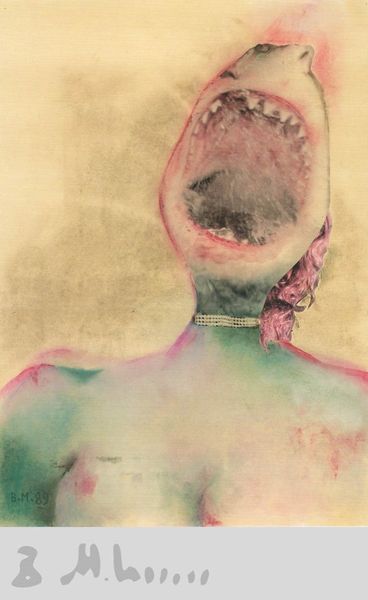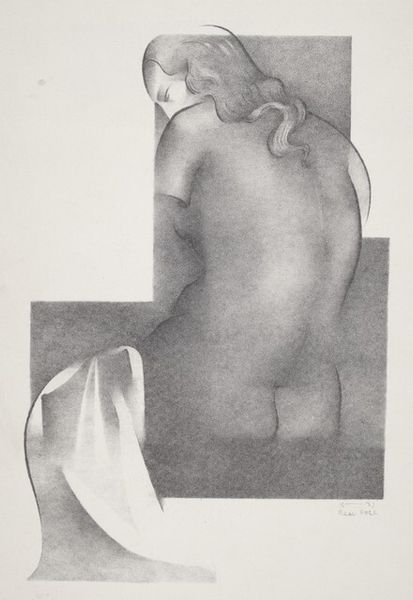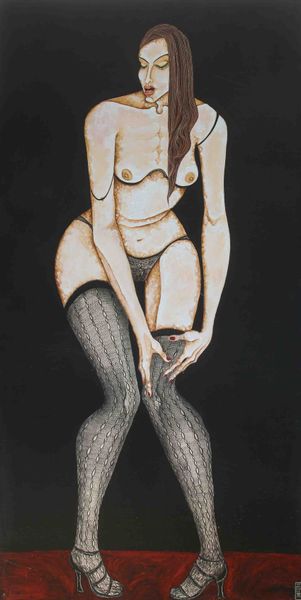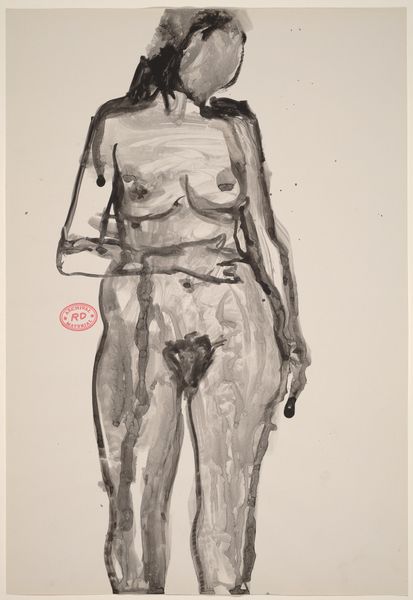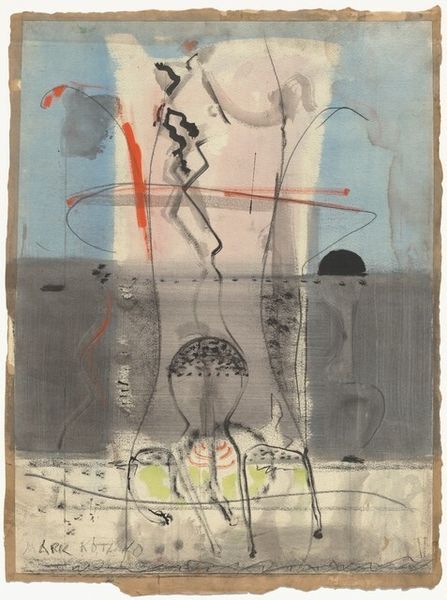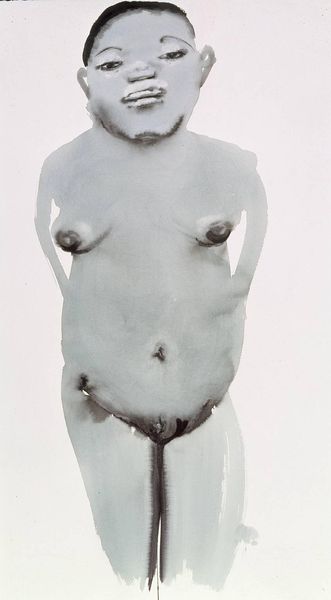
Copyright: Marlene Dumas,Fair Use
Curator: Ah, Marlene Dumas’ “Bodily Fluid” from 1996. What do you make of it? Editor: It's stark, immediately unsettling. The way the charcoal washes over the figure... It feels vulnerable, yet also guarded. Like a secret whispered just loud enough to hear. Curator: Vulnerable is key, I think. Dumas often uses charcoal and watercolor in ways that embrace the fluidity of the body, both literally and figuratively. Note the almost careless drips. Editor: Right, the “fluid” isn't just metaphorical, it’s embedded in the making. The wash of charcoal gives the impression that she worked quickly. Was she perhaps making a statement about how female bodies have historically been commodified? Curator: Maybe. For Dumas, it is about confronting our own often unspoken fears and desires about the body. Especially regarding beauty, aging, death…she doesn’t shy away from portraying the taboo or abject aspects of them. I read her work as deeply rooted in feminist art traditions that push representation forward and dismantle patriachal ideas about what bodies can/should be and do/should do. The material quality—the stains and smudges—almost act like the memories etched on our bodies, wouldn't you say? Editor: Definitely, this reminds me of Kiki Smith’s corporeal focus combined with Sante d’Orazio’s hyper-realism. I can imagine she would make sure the raw materials were ethically sourced and she was trying to question the very power structures surrounding this art piece. What fascinates me is this obscuring of the face—a layer of paint almost like a mask or a kind of protective shield. Curator: Yes! Masks have been used across time to disguise the artist, to shield their bodies. And the face itself is a symbol – almost completely blocked here. Is she hiding something, protecting herself from the audience's gaze or forcing us to really confront our own? Editor: It makes you consider the labor, too—the extraction of charcoal, the sourcing of the paper. Every material has its history. Curator: Always. So much thought went into choosing her specific material--she wants the viewers to wonder, too. It reminds us the piece is a moment – a single trace, a physical entity that lives in the here and now. Editor: I concur wholeheartedly! A powerful reminder.
Comments
No comments
Be the first to comment and join the conversation on the ultimate creative platform.
